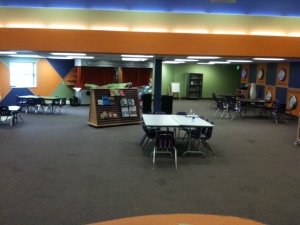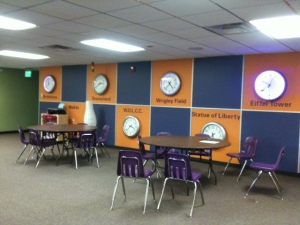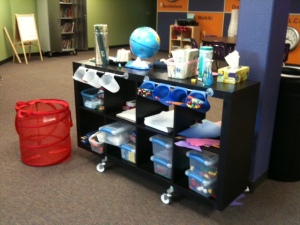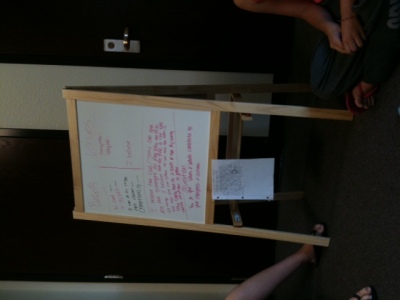I might be too old for conferences: #Educon reflection
Over the weekend, all of Team Anastasis took a little trip to Philly for Educon. The experience was incredible, but not for the reasons you may be thinking. In the past, education conferences have been a place to go and collect ideas to bring back to the classroom. Educon offered this, but it isn’t what we came back talking about. Educon is a wonderful conference put on by the great educators at Science Leadership Academy. The conference started with a tour of SLA led by students. I appreciated that the tour was student led…it gave us an inside look at what the culture of the school looks like and let us see the school through the eyes of a student. It is always interesting to listen to the way that kids talk about their school, their experiences, their plans post graduation. The school is really wonderful. It is a one-to-one Macbook school, but the technology isn’t really what you notice when you walk through the classroom. The technology really blends into the background just the way books, pencil and paper do. The classes we walked through felt pretty typical of my own public high school experience. Students were engaged in experiments, filling out rubrics for themselves on their performance in Spanish classes, exercising in health class, and putting the finishing touches on projects.
I feel blasphemous even saying this but I was a little bit…underwhelmed. It isn’t that what we saw wasn’t “innovative” (the buzzword of the weekend), but it just wasn’t earth SHATTERING. I guess that my take away has more to do with my expectations of what I was going to see than with what SLA is doing. Hang with me here.
In the past, I would go to education conferences and was absolutely inspired by what other schools around the world were doing. I came back to my own classroom on fire to try some of the new ideas and thinking. I continued conversations about what I had seen and experienced at the conference. I pushed myself to do better for the students that I teach. Maybe I’m getting too old for conferences. You know that point of growing up when playing make-believe doesn’t hold the same magic as it used to because you have new interests and understandings about the world? That is kind of how I am feeling about conferences. They used to reveal things to me that I hadn’t been challenged with in the past. They used to inspire new ways of thinking about learning. Lately conferences leave me feeling frustrated. We are having the same conversations, listening to the same excuses about why something won’t work in the classroom or school that someone is in because it is ruled by Nazis. I grow really weary of hearing the excuses. I grow really weary of educators defending practices that aren’t best for kids because they have discovered a technicality of this one time in history when the practice was useful.
I want to be inspired. I want to be surrounded by people who will say, “I’m doing it, regardless of what policies my school will or will not change.”
Part of the “problem” is that I am surrounded by 6 of the greatest teachers on the planet every single week. Honestly. These people are incredible. They are willing to walk into the unknown. They are willing to rethink everything they know about education and learning. They are willing to change every plan they have carefully laid out because they know it is what is best for their students at that moment. They look at their students every day with such love in their eyes, that you know they would do anything for them. It makes going to conferences, even the “innovative” ones, feel like a step back in time. I know that what we do is revolutionary, but sometimes I forget how revolutionary it is because I live in it every day.
After the tour of the school, we were free to wander the streets of Philly until the opening Keynote panel to really kick things off. We bought some subway tokens from student, and transportation genius, Jeff and headed off to see the Liberty Bell. Traveling the streets of Philly with my staff was epic. These people make me laugh until no sound comes out. We did touristy things together, like take pictures in the subway (because @bestmscott was a subway virgin). We listened to Lance ooh and ahh over Independence Hall. That guy can throw down when it comes to American history. I’m kind of jealous that Anastasis students are the only recipients of that passion. We exclaimed over how much smaller the Liberty Bell is in person than we had anticipated. We made a lip sync video to Crazy Train while we waited for our tour. We argued over the kind of trees that surrounded Independence Hall (I stand by rubber tree- that is what they look like they are made of). We booked it to Sonny’s for a genuine Philly cheese-steak complete with cheese whiz.
This is what conferences and professional development should be. Opportunities to build culture and community for a school body. Opportunities to learn together and see each other’s passions. My new goal is not to take my staff to a conference. My new goal is to start a travel agency for educators that makes it possible to travel for learning and meet with other educators who are doing the same. It is wonderful to see all of the other amazing, passionate educators that I learn from online every day in person. It is wonderful to sit over a glass of whiskey and talk about what we saw, what we learned and education philosophy. I learned that the real reason I go to conferences is not for the sessions that I sit and participate in. It is for the human contact. It is so that I can remember there are others in this fight for children. It is so that I can rub elbows with others who care as much as I do.
Team Anastasis led one of the first sessions on Saturday. We were humbled by the turnout we had for our “Searching for daVinci” conversation. This conversation took the shape of a: What, So What, Now What discussion. The point of this format is to get smaller groups discussing and then sharing out with the larger group. I enjoyed this format, it gave us the chance to do what we do with students every day at Anastasis. Our topic came from a blog post I wrote about daVinci and some other conferences I have presented at. You can see the website we used to guide discussion at http://searching4davinci.weebly.com. In addition to an overview, it has my Bloom’s Taxonomy images and pictures from inside Anastasis. I truly did enjoy the conversations that were had, and the bunny trails that they led to. One of my favorite share outs was from a teacher who said “we need to start hiring renaissance, daVinci teachers.” Our main focus was on creating classrooms that would foster the daVinci in students. I really liked the teacher angle. He was right, it is hard to create this type of learning atmosphere without teachers who are multidisciplinary and passionate about a variety of disciplines. That is what makes our rock star teachers at Anastasis such rock stars. They are that kind of teacher.
We enjoyed engaging in conversation in the panels and other sessions. Sometimes we wanted to fight, and sometimes we couldn’t agree more. The whole conference was kicked off with the panel about how to sustain innovation. Some time was dedicated to defining what innovation was (vs just a trend) and panelist offered ideas about how innovation could be sustained in schools. I’m not sure an answer was ever landed on and I think that part of the problem was that innovation can’t be sustained when your focus is on innovation. Innovation is not something that you can plan out. Often it is the result of happy accidents and hunches colliding and a willingness to do something scary. I asked (rather uneloquently) if maybe we weren’t asking the right question. I’m not sure there is an answer to sustaining innovation. Maybe the real question should be, how can we make education look more like life? How can we bring more of what it means to be human into the classroom? How can we encourage life to happen in education? Innovation is a natural byproduct of life. Innovation happens where their is opportunities for failures that lead to new thinking. Failure is also a natural byproduct of life. After the panel discussion @matthewquigley commented on how uncomfortable educators were with open ended questions. “Did you notice that EVERY teacher in there felt the need to give a conclusive answer?” It was true, most were not willing to leave the panel without a clear cut “this is how you do it” answer. How sad. Questions and inquiry make way for innovation. When you already have the answer there is no longer a reason to innovate.
What bummed me out about this conference was the number of excuses I heard about why something would/could never work in their situation. What I really saw: fear. I refuse to believe there is nothing to be done. I refuse to believe that we can’t do better for kids now. I refuse to believe that there is no wiggle room around all of the constraints we think we have. I refuse to accept it. I know it can be different. And if it can’t, my next question is: why would you accept that? If you truly want what is best for kids (and I know you do), why would you continue down the path of can’t? Stand up. Fight. Start over. Do something. The excuses will get us all nowhere. The excuses hurt the kids who don’t have time to sit and wait for us to get it right. I know some will say that it is different for us because we decide what our school looks like. We started the school. It wasn’t hard. Everyone could do it if they were willing to be a little bit afraid. @matthewquigley and I started a school with zero dollars. No joke. We didn’t get some wonderful grant, government money, etc. We figured out how to be uncomfortable for a little while so that we could do something amazing. We surrounded ourselves with families who supported us emotionally and acted as our cheerleaders and challenged us. We found other teachers who were crazy and passionate enough to journey this path with us. We built a community. That is what it takes, a community who is ready to change the path because it is the right thing to do. Don’t wait for your admin to wake up and do it, or for the teacher next door to get on board, or the government to change. Be the change you want to see and do it.
What I loved about Educon: encouraging and fostering the community and culture of our school by going on this grand adventure together. Meeting up with friends and fellow change makers from around the world. Making jokes, challenging each other, sharing a meal, sight seeing and singing together. Sharing laughter, ideas, and stories. Seeing students take ownership over their school and pride in showing it off.
As it turns out, this post is a lot longer than I had anticipated…sorry about that. I am too old for conferences. Sometimes we have to play make-believe with others until they too outgrow conferences. I’m okay with that. Baby steps. What I would like to hear less of is the excuses. I would like to see more opportunities for those of us who have outgrown conferences to have a different kind of learning experience. One where we travel to a common destination where we can explore, and geek out, and share. One where we can debate over a good Philly cheese steak, sing karaoke together, and challenge each other. Maybe what we really need are host schools around the world that can be our gathering place for grand adventures of this sort. Any takers?
Yesterday @matthewquigley stopped me and said “You know we can’t call our teachers ‘teachers’ any more right? They are change makers.” He is so right! Lance (soon to be on Twitter), @nancybabbitt, @leadingwlove, @michellek107, @bestmscott, @matthewquigley: you are my heroes. I had the BEST time with you all and I couldn’t be more excited about what we are doing to change our corner of the world. Onward.































